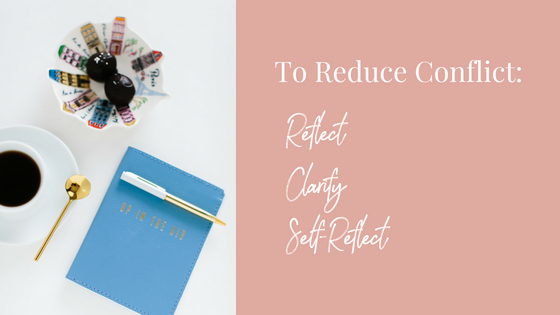How to Reduce Conflict
Three Techniques to Reduce Conflict
My son, Luke, and I were on our way to his weekly guitar lesson and decided to stop by Taco Bell for some after-school nourishment.
It took Luke a while to decide what he wanted to order, but once he did, I started ordering through the intercom. I misspoke more than once and had to correct my order. The young man on the other side of the intercom was extremely patient and gracious with my errors.
After ordering, we pulled up to the window to pay, and I noticed that the same employee was juggling multiple tasks at once. He was dealing with a long line of cars behind us and putting together our order at the same time. I felt the desire to validate and encourage him.
I waited for an opportunity and said to him, “You are doing a great job juggling everything.”
He looked at me with an unusual look, as if he was a bit confused. He smiled awkwardly and turned back to what he was doing.
I thought maybe I had overstepped a boundary. Perhaps it was awkward that a drive-thru customer was praising his work.
He went on with his job, and then, just as he was handing us our food, he said, “Can I ask you a weird question?”
“Sure,” I responded, unsure of what was coming.
“How did you know my name?” he asked.
Ummm . . . what? How did I know his name? I didn’t know his name. How should I respond to this?!
“I’m not sure what you mean,” I said.
“My name . . . Justin. You said, ‘You are doing a great job, Justin,’ a few moments ago. I am just wondering how you know my name since I don’t have my name tag on.”
Oh! I got it. When I said, “You are doing a great job juggling everything,” he heard, “Justin,” and it just happened to be his name. He was confused. I was confused. But we laughed.
Isn’t it funny how easily we miscommunicate? Unfortunately, miscommunication is one of the leading causes of confusion and conflict.
While miscommunication is inevitable, we can reduce its occurrence by using these three techniques:
1. Reflect
Sometimes it can feel a bit awkward, but reflecting back what you hear the listener say is a valuable tool. Too often, I find myself listening to reply, not listening to understand. Listening to reply keeps us from really comprehending the other person’s message. It limits our ability to empathize or hear their heart. When, instead, we reflect back what we are hearing, we are able to open our minds and connect with their message.
2. Clarify
Asking additional questions is a wonderful way to avoid confusion or conflict. Additional questions not only clarify the speaker’s message, but they also drill down to the real message the speaker is trying to convey. Statements like “tell me more” or “help me understand” create space in the conversation and limit our human tendency to jump to conclusions.
3. Self-Reflect
We all have our own lens through which we see the world. AnaïsNin said, “We see the world, not as it is, but as we are.” We also hear things as we are. We each have our own unaddressed wounds, hurts, and triggers, which may be raw and cause others’ words to feel like sandpaper. When listening, I have to remind myself that someone’s words might seem harsher than they are meant to be, due to my own filter.
Confusion and conflict can be difficult, but we have the power to connect with others in a more purposeful way. Leaning in and reflecting, asking for deeper clarification, and checking our own filter helps make meaningful communication much easier.
You are amazing! Now start living like it!


